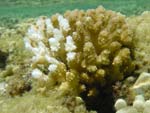The U.S. Fish and Wildlife Service will provide $19 million in grants through the National Coastal Wetlands Conservation program that will be matched by nearly $26 million in partner contributions.
On Jan. 5, EPA will present a Webcast on the draft findings of the National Lakes Assessment.
An Inslee-Markey resolution would call on the United States to adopt policies and support international agreements to address ocean acidification.
Natural gas developer will provide $750,000 to monitor water quality conditions through areas of the watershed where Marcellus Shale development occurs.
The pump station is just part of the South Florida Water Management District's plan to develop a wetland that will clean stormwater runoff bound for Lake Okeechobee, and ultimately, the Everglades.
Letter to congressional leaders points out that Senate bill 787 would give EPA and Army Corps of Engineers the power to regulate all inland waters.
Enhanced regulations call for not more than 0.45 pounds of phosphorus per acre per year to run off newly developed properties.
State says Navy can dispose of material at Central Long Island Sound Disposal Site until it develops a dredged material management plan.
More than 30 organizations are represented in a new coalition that will leverage support from citizens across the United States.
The science-based tool lets a user quickly assess the relative vulnerability of species to the effects of predicted climate change in a specific geographic area.
The investigation into the M/V Theotokos led to the first criminal prosecutions under the Nonindigenous Aquatic Nuisance Prevention and Control Act.
University scientists in Wisconsin and Minnesota say aspens are already growing at accelerated rates in their natural environment.
California's Climate Adaptation Strategy includes a final report, an advisory panel, and a Google Earth application to help business owners and residents prepare for climate change impacts and challenges.
According to the Center for Biological Diversity, pesticides have been linked to immune and endocrine problems as well as cub mortality in polar bears.
Woods Hole Oceanographic Institution also found that some species were adversely affected by elevated levels of atmospheric carbon dioxide.
Peter Allard, who owns a facility in Barbados, filed a complaint against the government alleging it violated its obligations at Graeme Hall Swamp.
EMPOWER is broadening its network of rescuers to help wildlife victimized by marine pollution emergencies.

The scientists find that Vibrio coralliilyticus produces betaine, glutamate, and succinate are involved in the transformation.
Contaminated riverbank and floodplain soils are the major source of mercury in fish from several Shenandoah Valley rivers.
The work of the University of Georgia's Jaroslav Tir and Douglas Stinnett is funded by the National Science Foundation and the Department of Defense.